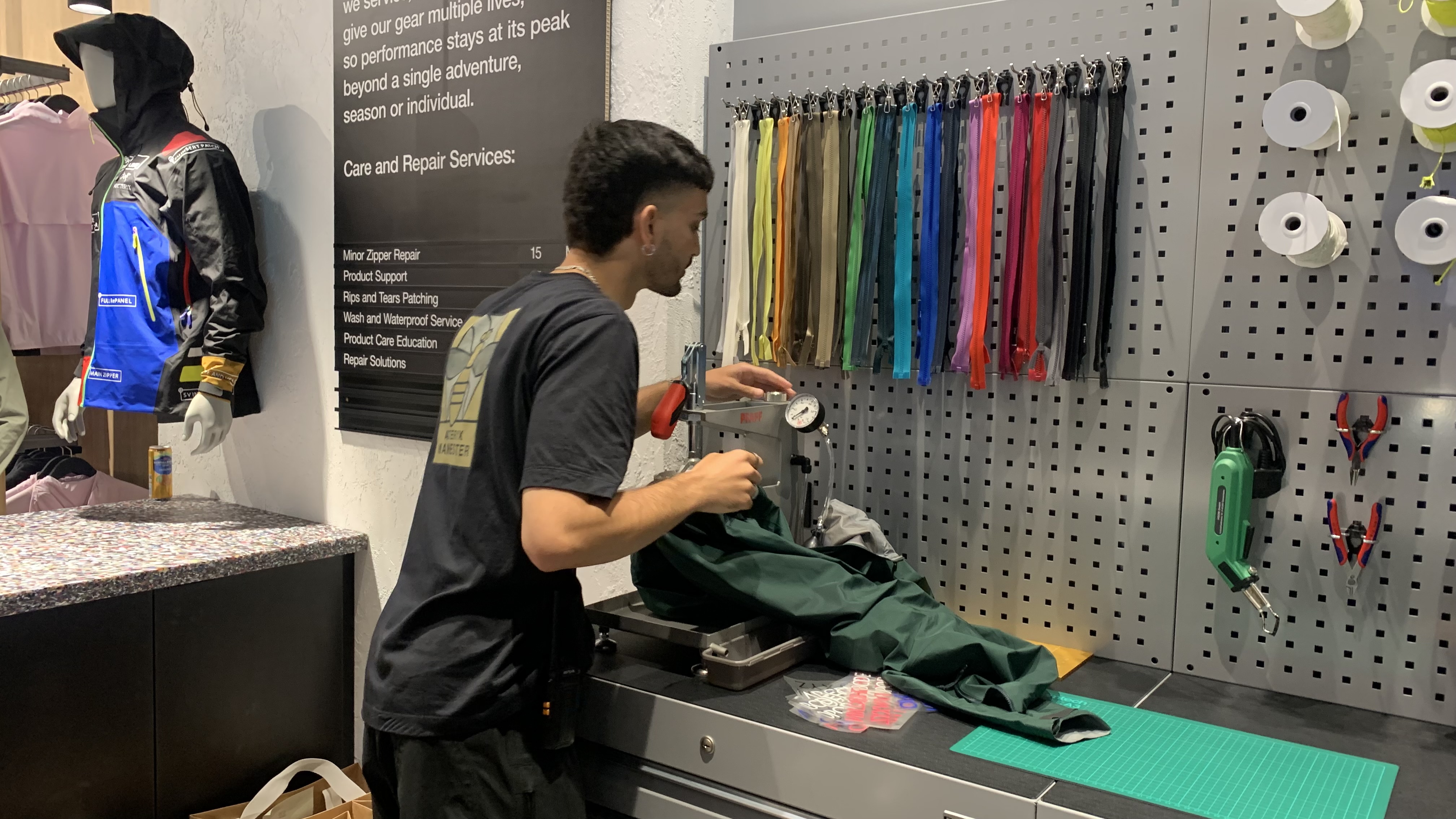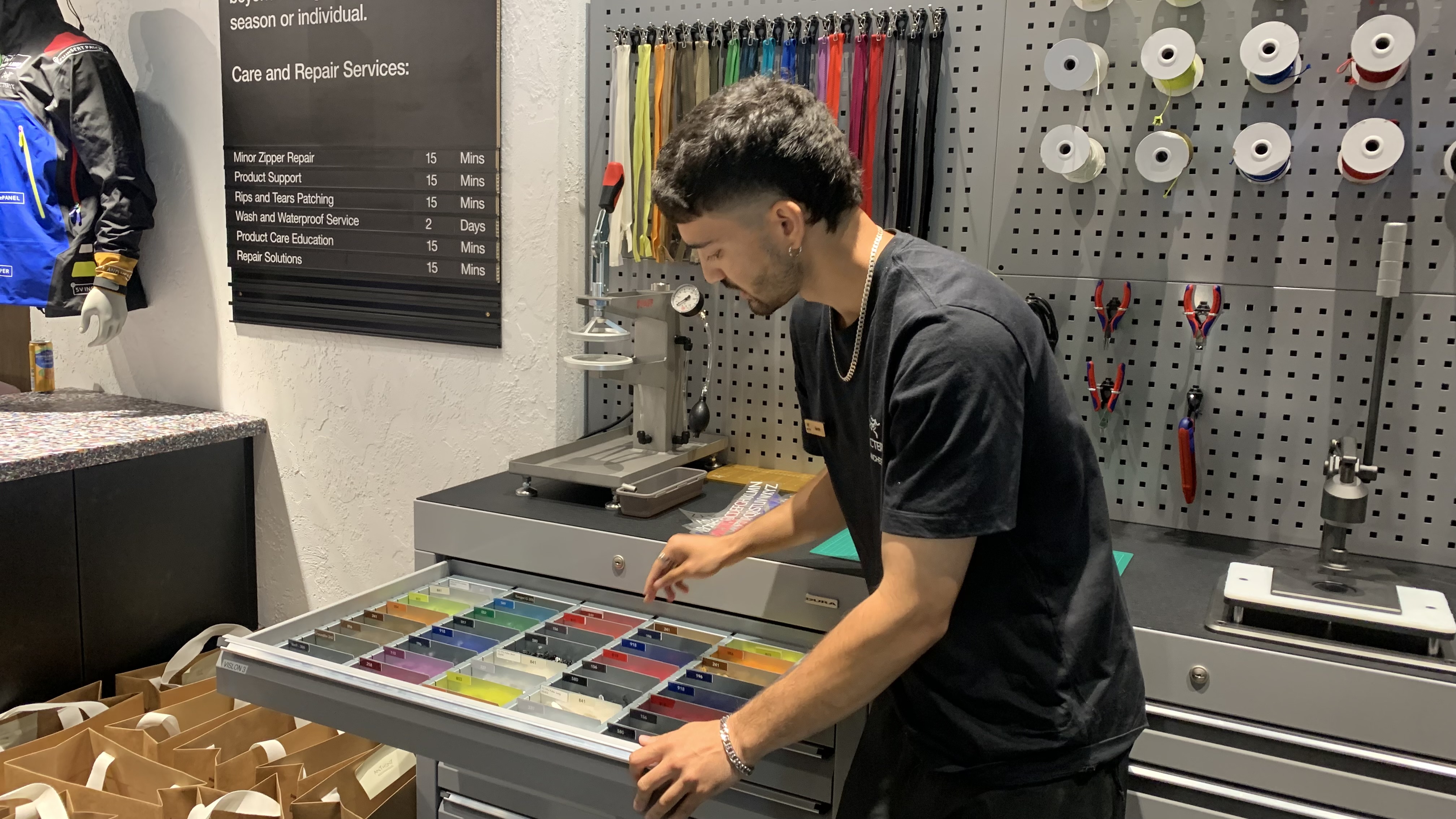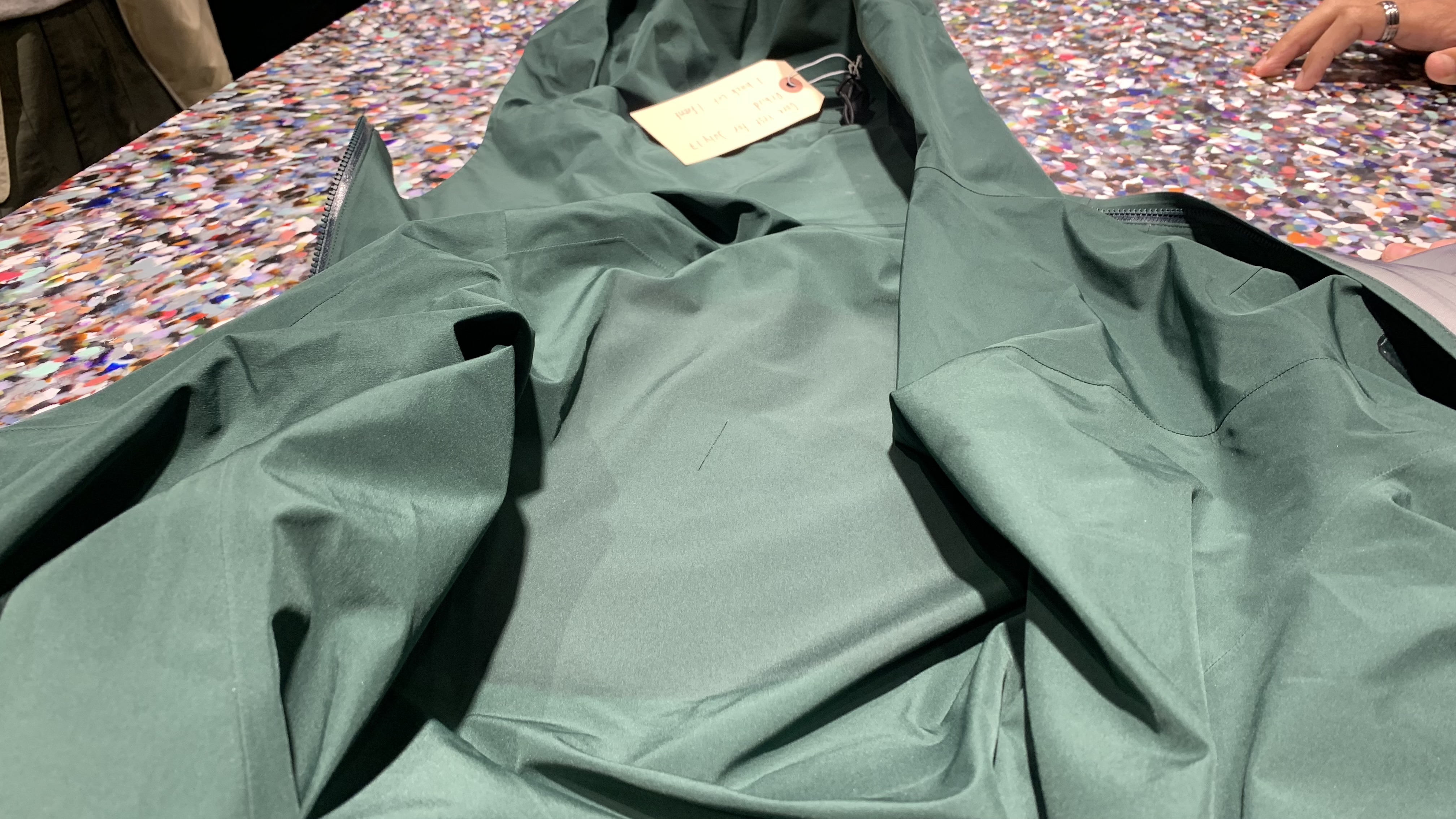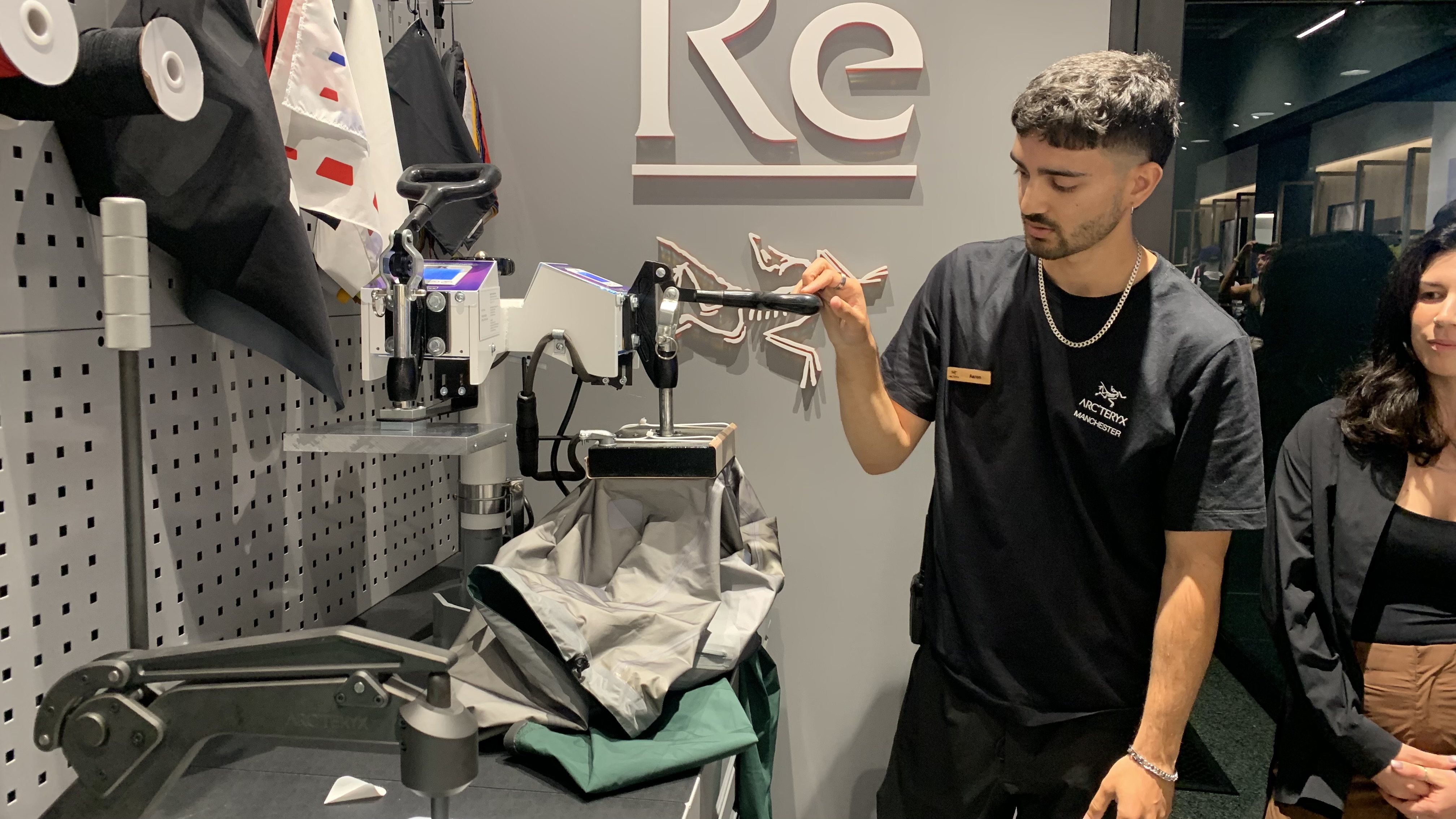I visited an Arc’teryx ReBird Service Center and discovered just how easy it is to keep my favorite outdoor gear in play
Arc’teryx’s ReBird center will wash, waterproof and repair your priciest outdoor gear, often for free

Picture it: you’ve been hiking in a steady rain for half an hour when you start to get the sneaking suspicion that, despite the weather shield promised by your pricey Arc’teryx rain jacket, your shoulders are soggy. A quick check confirms that, indeed, your base layer has two dark patches where you should be dry. What do you do?
A lot of people would decide it’s time for an upgrade, even though they may have spent upwards of $400 on a high-quality model like the Arc’teryx Beta LT (or as much as $600 on the Beta AR Stormhood). That old jacket might end up on eBay (or worse, the landfill), and you could form the opinion that Arc’teryx jackets aren’t very good, even though they’re considered some of the best waterproof jackets around.
But if you take that same jacket into an Arc’teryx ReBird center – which would be a more reasonable response given its high price tag – you might discover that the only problem with your jacket is that it needs a good wash.

Lather, rinse, repeat?
Last week, I went to the opening of a new Arc’teryx store in Manchester – located in the north of England, it’s the brand’s first UK store outside of London, and it joins 25 stores across the globe that now have an in-house Arc’teryx ReBird service center.
Shortly after arrival, I’m ushered upstairs to the second floor, where product guide Aaron Rodriguez walks me through what might happen if I were to present him with a jacket like I described above. For demonstration purposes, he pulls out an old Arc’teryx Zeta LT in forest green that’s been dropped off by its owner to repair a tear in the back. The Zeta is no longer in production, having been replaced by the ultralight Beta, which is a good sign that this jacket has seen plenty of wear and tear.
Rodriguez takes the jacket to one of several machines behind the counter and clamps a section of the fabric between two plates. With the flip of a switch, the machine starts forcing water upwards into the fabric at a rate far more forceful than the heaviest rainstorm, causing it to bulge under the pressure.
“You can see that the water isn’t getting through, so we know the jacket is still waterproof,” says Rodriguez, before shutting off the machine.
All the latest inspiration, tips and guides to help you plan your next Advnture!
People don’t want to wash their waterproof jackets, so they're surprised then we tell them they need to.
Aaron Rodriguez, product guide
He goes on to explain that the reason the jacket’s hypothetical owner might have damp shoulders while hiking in wet weather is that the pores in the Gore-Tex membrane that allow sweat to escape get clogged over time if the jacket isn’t washed. So that dampness that you’re experiencing on a rainy day could just be your own sweat building up on the inside of your jacket.
“People don’t want to wash their waterproof jackets, so they’re surprised when we tell them that’s what they need to do,” says Rodriguez.
It’s true that many of us fear washing off that prized DWR that makes rain bead on our jackets, but that’s something that can be restored simply by learning how to reproof your gear. And if you don’t feel confident washing your expensive jacket? Drop it off at a ReBird store and they’ll do it for you – on the day of my visit, store manager Elena Fanton says they’ve taken in a dozen jackets for a wash and reproof.

Keeping gear in play for longer
The wash and waterproof service is all part of Arc’teryx’s circularity initiative, which aims to keep its gear in play for longer, from design to post-purchase. Sven Radtke, general manager of Arc’teryx Europe, tells me that the Canadian brand’s focus on circularity begins in development.
“In the beginning, it was all about freedom of movement and functionality in design,” says Radtke.
“Now we have a repair service, our design teams are always considering how they can create the same functionality, the same freedom of movement, and make it easier to repair.”
That can mean designing jackets using panels that can be replaced in their entirety, which means every rip, rub, and tear doesn’t have to spell the end for the life of the garment.
Once the design process is complete, the brand uses more sustainable production methods like dope dying instead of traditional dying to cut down on water usage and joins many brands in switching to the new PFAS-free Gore-Tex membrane. And if you’re truly ready for a new jacket or pair of rain pants? Arc’teryx is developing a program to trade in your old gear, which is already available in North America.

All about circularity
Outdoor enthusiasts can be especially guilty of loving the planet to death, thanks in part to our endless appetite for new gear and also to our tendency to put our kit through the ringer. This isn’t just speculation – a 2018 research article claims our carbon footprint is 40 percent greater than that of athletes from other individual sports, and participants in nature sports (e.g. hiking and trail running) have the highest emission levels of all.
It’s not because we don’t care about the planet. It’s just that a jacket that comes with you on your weekly hike is going to take more of a beating from your backpack straps, thorny bushes and sharp gear like ice axes than one that you wear to pick the kids up from school and that’s perhaps how this particular Zeta LT in front of me has ended up with an inch-long slash in the back.
That hole means that, unlike with the clogged pores, the jacket really isn’t waterproof any longer, but it’s still no reason to toss it. Rodriguez opens one of dozens of drawers behind the ReBird counter to reveal patches in a multitude of colors. He selects one that matches the green jacket, turns to another machine – these machines are built in-house by the Canadian brand – and pulls a lever down to apply heat and fuse the patch. A few seconds later, the hole in the jacket is gone, and the patch is barely visible to the naked eye.
As long as it’s Arc’teryx, we’ll fix it.
Elena Fanton, store manager
A menu of services behind the counter advises me that a fix like this should take 15 minutes, though in reality it’s far less, and it’s completely free. The same goes for minor zipper repairs, buckle replacements, and really any small repair that doesn’t require stitching – those types of fixes require sending your item off and may incur a small fee if, for example, the damage was sustained using your gear for a purpose other than that for which it was designed.
Some customers like to choose a patch that’s a different color from their jacket in an ode to the gnarly adventure that earned them the patch in the first place, and Fanton says they’re happy to oblige – but they won’t replace a perfectly good zipper with another color just for aesthetic reasons.
“We don’t offer personalization. This is about circularity and keeping the gear in play,” explains Fanton.
“As long as it’s Arc’teryx, we’ll fix it. It doesn’t matter if you bought it on the other side of the world.”

Make it last
Arc’teryx isn’t the only brand offering in-house repairs these days.
Osprey will repair your backpack no matter how long ago you bought it, Rab and Mountain Hardwear both have service centers to repair packs, sleeping bags and apparel, and Danner’s recrafting site will re-sole your favorite hiking boots to increase their mileage. But compared to some of those services, which come with a fee or entail mailing your item away, the ReBird Service Center does stand out to me as being particularly accessible and efficient.
Of course, while gear manufacturers like Arc’teryx can work from their end to use more sustainable production methods and offer care and repair services, a large degree of the responsibility here does fall on our own shoulders.
The better you care for your gear, the longer it’s likely to remain in the field, and that’s the best way to keep kit out of the landfill – and cut down on the costs of your outdoor kit too.
We’ve already shared some pro tips from ReBird for extending the life of your gear, and Product Care Education is one of the free services offered at a ReBird center. So if you’re feeling like that jacket isn’t living up to the promise of its price tag, don’t be afraid to stop in and ask them how to refresh your gear at home – they can even send you away with a bottle of own-brand DWR if you feel confident reproofing your jacket yourself next time.
Julia Clarke is a staff writer for Advnture.com and the author of the book Restorative Yoga for Beginners. She loves to explore mountains on foot, bike, skis and belay and then recover on the the yoga mat. Julia graduated with a degree in journalism in 2004 and spent eight years working as a radio presenter in Kansas City, Vermont, Boston and New York City before discovering the joys of the Rocky Mountains. She then detoured west to Colorado and enjoyed 11 years teaching yoga in Vail before returning to her hometown of Glasgow, Scotland in 2020 to focus on family and writing.

